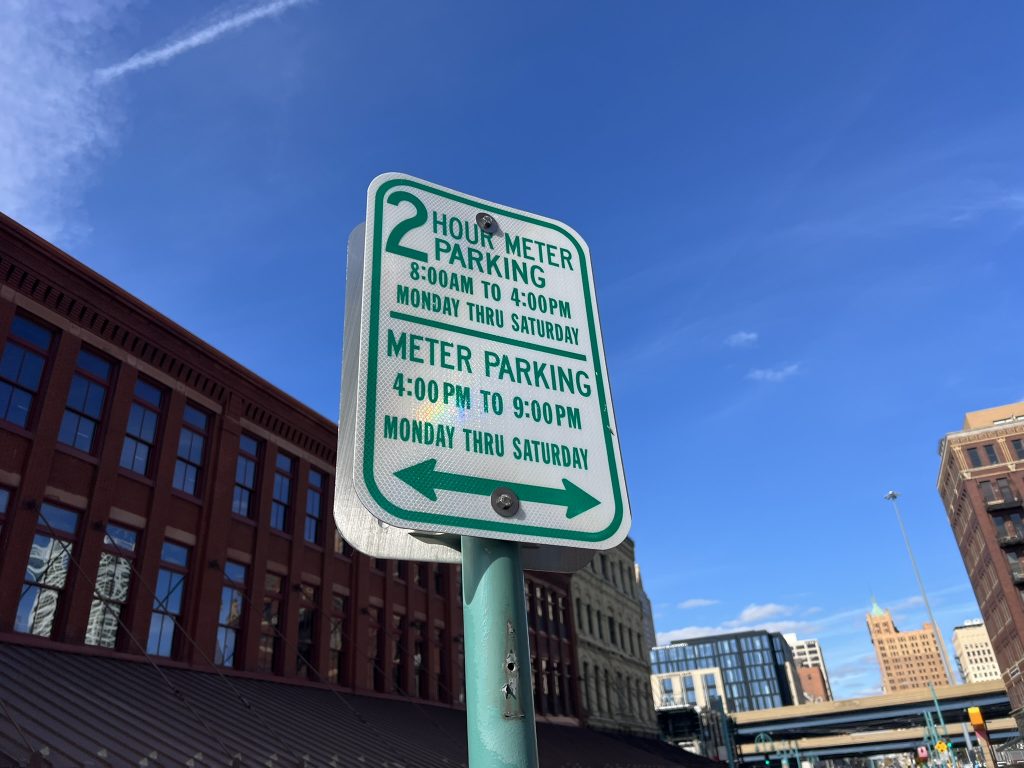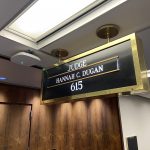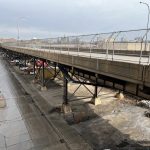Milwaukee Extending Hours For Downtown Parking Meters
It could also add more areas with variable pricing.
Driving Downtown and planning to park on the street? Be prepared to plug the meter more often.
Two years after it was approved, the Department of Public Works is following through on a plan to extend the hours parking meters are in effect. It could also implement demand-based pricing in areas beyond Fiserv Forum.
The city is extending meter hours in the downtown area until 9 p.m. and adding Saturday hours. Work is nearly complete in the Historic Third Ward.
“In two weeks, that should be completed, and then we will be branching out through the downtown area,” said Peter Knox, parking services manager, to the Finance & Personnel Committee on Oct. 15.
Each meter will require payment for an additional 28 hours weekly, as the city extends enforcement from 8 a.m.–6 p.m. to 9 p.m. and adds Saturday hours. Sunday will remain free. The two-hour time restriction is lifted after 6 p.m.
But even with the change, the city is projecting a drop in parking revenue from its 2025 estimate of $6.5 million. The 2026 budget calls for $4.6 million in meter revenue.
The 2025 estimate was based on the assumption that the city would roll out the expanded hours, but that didn’t happen. The longtime Parking Services Manager Thomas Woznick was replaced midyear by Knox, the veteran manager of the city’s tow lot.
Budget analyst Sarah Osborn said the city was using “conservative” figures based on actual past collections instead of projected totals. “We’re using projections based on trends to date and the past couple of years of revenue,” she said.
“Implicit in that change is admitting last year we weren’t as conservative as we should have been,” said Budget Director Nik Kovac.
The Transportation Fund balance has gone negative in recent years, preventing the city from generating a profit to subsidize general city operations. Kovac previously told Urban Milwaukee the city is working to restore the fund’s fiscal health over the next couple of years to resume annual transfers. It was previously able to transfer upwards of $10 million annually from the fund.
Parking permits, citations, city-owned structures and lots, tow lot, dockless scooter fees and streetcar-related revenues also fund the Transportation Fund. The streetcar system is also funded by the Transportation Fund.
Approximately two-thirds of the city’s 6,200 meters are located in the downtown area. Rates vary from 75 cents to $2 per hour.
Demand-Based Pricing
DPW is also expected to pursue an expanded partial implementation of its demand-based pricing model, which was first approved in 2018.
The idea has the support of Alderman Peter Burgelis, who said he was struck by seeing how cheap meters are Downtown when private lots and structures can charge upwards of $40 for events.
“I think it’s important for the city to recognize there is an opportunity not to match what the private parking lots are charging, but to be reasonable and reflect the market and not leave money on the table,” said Burgelis to the Public Safety & Health Committee Thursday.
The city already raises meter rates on approximately 200 meters located near Fiserv Forum. Knox said, in 2024, DPW raised rates for 149 events.
“If it’s $20 or less, we will charge $3 an hour at the meter. If it’s between $25 and $35, we will charge $4 an hour. If it’s $40 and up, we will charge $5 per hour for the meter,” said Knox.
The city relaxes the two-hour limit during events, allowing people to park for the duration of the event and meters near Fiserv Forum already extend to 9 p.m.
“In 2024, those 200 meters generated $330,898,” said Knox. But he noted that the city cannot determine if it occurred when event pricing was in effect and does not charge on Sunday.
With a prompt from Burgelis before the meeting, DPW identified several other venues in which it could implement the model.
Knox said the city is exploring demand-based pricing near Henry Maier Festival Park, the Bradley Symphony Center, Marcus Performing Arts Center, Miller High Life Theatre, Pabst Theater, Riverside Theater, Turner Hall and UW-Milwaukee Panther Arena. Based on their proximity, several of those venues would have overlapping meters.
“The thing we want to be careful with is you don’t want to have too big a footprint,” said Knox. He said DPW needed to be careful not to increase prices on too wide an area where it would negatively impact those parking for unrelated events.
The meter software system, said Knox, also requires the city to predefine which meters are included in each zone and plan for any changes.
“We have a model that is working with the Fiserv, working very well, and it’s going to continue to expand,” said Knox.
“I’m glad that we have that as an option,” said Ald. Sharlen P. Moore. She said that maintaining the rates lower than private garages and lots offered residents, if they planned ahead, an opportunity to come Downtown more affordably.
Ald. Larresa Taylor asked DPW to prepare information on how much revenue could be made if meters were extended to Sunday. DPW officials have previously said the net revenue for the city could be limited because the city would need to increase parking enforcement officer staffing on Sundays.
Citations
The number of citations issued in 2026 is also expected to increase, as it was in 2025. In 2024, approximately 397,000 citations were issued, 475,000 are currently budgeted to be issued in 2025 and 550,000 are planned for 2026.
Much of the increase can be attributed to a planned increase in staffing of parking enforcement officers.
“We’ve also put a big emphasis on utilizing data on how we plan our routes, patrol our routes and so forth. We’ve been experimenting for the past six months and I think we’re getting some good route designs,” said Knox.
The city is also piloting automated tow dispatching, which is expected to reduce the time for police officers and parking officials to determine if a vehicle is stolen and set up a tow. Knox said the change, several years in the making, is expected to yield substantial time savings.
Citations, said Knox, are intended to drive compliance with city regulations focused on safety.
“We do have areas of the city that have very, very poor compliance,” said Knox. “It is essential for the city for public safety, street sweeping, plowing… that we need to get compliance in the city.”
He said he expected citations to increase in order to achieve that compliance. “Our complaints are through the roof from each district.
“We are not just blindly doing things,” said Knox. “We have an understanding of what’s going on and where some of the concerns are that we want to address.”
But Alderwoman Marina Dimitrijevic, a skeptic of other parking changes the city has made, said the city needed a way to warn people. “I think we need to do additional communication and education as well, if it is to be a behavioral change,” she said.
Revenue from citations, based on the conservative modeling approach, is expected to drop by $3 million in 2026, from $17 million to $14 million.
Part of that, said the parking services manager, is that there is a lag between when citations are issued and when they are actually paid. There is also the issue of how many are paid. Knox said in the last two years the city has seen a 71% payment rate.
A recent city report identified approximately $41 million in unpaid citations in the past seven years. Starting in November, a new policy on habitual parking offenders will go into effect, which is expected to spur more compliance. Knox said DPW is also working on making it easier to enter into a payment plan.
But in the short run, even without an increase in the number of citations issued, the outstanding debt might climb because the average citation was increased $12 in 2025.
Knox said the actual revenue increase from that change won’t show up until 2026 because fewer citations were previously issued and people often take several months to pay citations.
The city has struggled to meet its budgeted citation totals in recent years. It budgeted to issue 455,000 citations in 2024, only to issue 397,000. The 2025 budget calls for 500,000 citations, but the updated figures presented to the finance committee on Oct. 15 included an estimate of only 475,000.

Existing members must be signed in to see the interactive map. Sign in.
If you think stories like this are important, become a member of Urban Milwaukee and help support real, independent journalism. Plus you get some cool added benefits.
More about the 2026 Milwaukee Budget
- When Democracy Delivers an Answer You Don’t Like, You Don’t Get to Redefine Democracy - Ald. Peter Burgelis - Dec 13th, 2025
- Entire Council Overrides Every Budget Veto by Mayor Johnson - Jeramey Jannene - Nov 25th, 2025
- Op Ed: Why the Common Council’s Amended Budget is Good Policy for Milwaukee - Alds. Marina Dimitrijevic and Russell W. Stamper, II - Nov 20th, 2025
- Milwaukee DSA Calls on Common Council to Overrule Mayor’s Veto of 4% Worker Raises - Milwaukee Democratic Socialists of America - Nov 20th, 2025
- Miffed Mayor Issues 7 Budget Vetoes - Jeramey Jannene - Nov 18th, 2025
- What’s In the 44 Footnotes Added to Milwaukee’s Budget? - Jeramey Jannene - Nov 14th, 2025
- Common Council adopts amended 2026 City budget - Ald. Marina Dimitrijevic - Nov 7th, 2025
- Council Marks Up Mayor’s 2026 Budget, Adds Services, Pay Raises - Jeramey Jannene - Nov 7th, 2025
- Committee Amends 2026 City Budget, Prioritizes Neighborhood Investment Citywide - Ald. Marina Dimitrijevic - Nov 3rd, 2025
- City Hall: Council Spends More Than Nine Hours Debating Budget Amendments - Jeramey Jannene - Oct 31st, 2025
Read more about 2026 Milwaukee Budget here
Political Contributions Tracker
Displaying political contributions between people mentioned in this story. Learn more.






















Parking, as “the most significant and disruptive land uses in urban areas” (Rethinking Parking by David Mepham, 2024, p. 1), must be part of mobility and transit planning. I’m pleased to see Milwaukee gradually entering modern parking concepts. As researcher Mepham states, “we have tended to ignore parking as a planning and urban design issue, and as a consequence, we have typically degraded the places that provide it.”
The Parking Reform Network (ParkingReform.org) is all about affordable parking that strengthens a city’s neighborhoods and business areas by simply recognizing the value of urban space. Their goal is to use the decades of close study and research (Shoup 2005, 2011; Shoup 2018; Grabar 2023; Mepham 2024) and their vibrant current organization to help people gain just the right parking when they need it, but not let parking push out other better uses of the land or push out other modes of transit. Most importantly, the goal is not to let parking degrade the features and places of the city that people want to visit and at the times they want to visit. The way to do this is by intelligent parking management.
Above all, Milwaukee must avoid problems similar to Chicago’s loss of billions of dollars in 2008 due to a poor understanding of its parking economics (Mepham 2024, pp. 223-225).
i really don’t understand what john december said or what a parking study accomplishes. however, this seems another case of if people like the place, want to visit stores or bars there, and spend time then that is the area that the price will go up for parking. seems counter intuitive and mean to me.
This is just to pay for The Hop. This is all on Tom Barrett and a poorly thought out idea. They never even tested the proposed route with free shuttle to see how many riders this mode of transport would attract.
Shut down The Hop.
Reasonable demand pricing during events that is well below the market rate charged by private lots and garages still seems like quite a deal to me.
I have no idea what the cost-to-income of street parking is but would be interested to know. That is, from a strict City economics standpoint: (1) how much in parking payments is collected every year vs. (2) how much it costs the city, calculated for a single year, to pave, stripe, maintain, sweep, and plow the parking lanes as well as the costs to collect payments and issue tickets.
Is street parking inherently a losing proposition for the City, based on the numbers?
I understand that sufficient and convenient parking is needed, and there is social and economic value in that. (So, too, is there value in educating residents and visitors to use transit, and increasing it for special events.) However, understanding these numbers may be the basis for exploring other models (esp. off-street parking as part of multi-use development). You know, options that go beyond the same model we’ve been using since the “horse-and-buggy” days. Urban Milwaukee and others have pointed to areas like Michigan Street and parts of the Third Ward with a wealth of parking well beyond what is typically needed—street parking and lots, including lots owned by the City.
We continue to live in a world where people expect to park right outside the entry to their destination for little to no cost. Folks will drive around a shopping center parking lot for 30 minutes during the holidays to get a “good spot,” only to then spend the next 90 minutes actually walking around and shopping.
JSALMON: Why are you beating this dead horse (the Hop)? You sound like POTUS 47’s vendetta against POTUS46 and POTUS 44, blaming them for everything. What evidence is there that increased parking revenue is specifically to pay for the streetcar, rather than all the other transportation needs within the City or County?
Who knew that something as simple as regulating who, and for how long, a car could park in a parking spot woulf become a cash cow for a municipality?.
Same thing with water bills. They used to cover the operational costs of the service. Now is has become a for-profit business, where they can charge residents in the city and 16 different communities that use it any amount they want to in order to rake in the moola.
I wonder if the area surrounding the main downtown library falls under this variable pricing??
@DAGDAG – Water rates and the rate of return are regulated by the Public Service Commission.
@MPBEHAR the irony that you would refer to the Hop as a dead horse, it is that for sure.
I live on the east side, yesterday it passed by me and I counted 2 riders.
Have you ever been behind it when driving, you don’t want to do that, it is very slow.
The Hop is so slow, that a few years ago, a bike, a car, and a walker all went on that same route from Ogden and Prospect to the MKE Public Mkt., and beat it, I believe it was in the MJS or one of the local stations that did the story.
In the winter switches break and when the switches break repairs can run $100,000 each time.
There is no system in place to collect any fare, and no plans into the future.
On average it costs about $10/per rider per ride.
And then you have others that think we need to extend it into other neighborhoods.
I can assure there will be no actual physical growth to this Tom Barrett led disaster.
What evidence do you have that the extended parking meter hours is NOT intended to fill the $4,000,000 million dollar gap.
The Hop runs from about 7am – midnight.
There were 1,630 riders in August and with those hours of operation that breaks down to about 96 riders an hour!
Again how is that sustainable when you also have busses running on the same line.
What is the tipping point when you say enough is enough and this thing needs to be shut down.
Finally, you inject Trump into this.
The statement that parking enforcement is for safety is not true. The majority of time a parking citation is written, a more significant safety hazard than the offending vehicle is caused by the parking enforcement officer’s vehicle. They very commonly park in bike lanes, across crosswalks, and in no parking areas blinding traffic. When challenged, the response is “I have the authority to park wherever I want.”
Businesses in the city (and now the city itself with the sales tax) need patronage from suburbanites to be successful. This just gives them yet another reason to stay away.
i like the hop. it is fun, interesting and convenient and free. rode it to the no kings rally and it was jammed full, both rallies, coming and going. it stops cars from parking in the 3rd ward which is a nightmare for finding a space. it is also ridden by people who don’t have bus fare. parking fees and parking structures need to encourage people to downtown and venues that draw crowds. can i bring up the concrete on the streets now that we are talking about the hop and parking. better to follow the hop slowly than try to navigate around misplaced concrete as on van buren and juneau.
JSALMON1159: My comparison with POTUS47 was not meant to bring up his name or politics, other than that the streetcar is here and somewhat operational, yet criticism continues to be leveled at how it was developed or who did it, not unlike how the current President continues to bring up the last ones repeatedly. The Hop was built, and serves downtown, which helps visitors who can’t find parking downtown. The cost of deconstructing it would certainly be another boondoggle! Enhanced transit such as with bus lines, subways, rail, etc., all seem to encourage development in adjacent areas, and that genererates business and neighborhood growth. Downtown is undergoing it’s renaissance now, and although not directly related to The Hop, one cannot eliminate improved transit as one cause. Sometimes it make take a few years to see how capital imporovements such as this may positively (or negatively) impact an area.
Yes, The Hop is slow. Like the St. Charles streetcar line in New Orleans. But like New Orleans, it is fairly reliable and helps travelers, students, and residents riding to and from the central business district & French Quarter. If Milwaukee’s were larger, extending to the north and south and west sides, more people would use them.
I never figured out why the old street car lines that ran throughout the city were removed in the 1950 & 60s. But that remains a historical oddity. In any event, one could argue that it could be decommissioned (at great cost), or service reduced except on big days downtown (any activity that generates traffic to a downtown destination), or something else. But instead of just (former Mayor) Barrett-bashing, let’s have tangible cost-effective options, like finding more private business support.